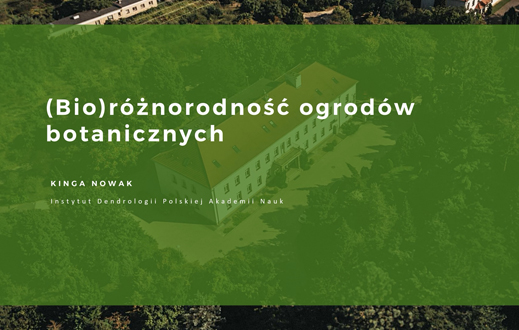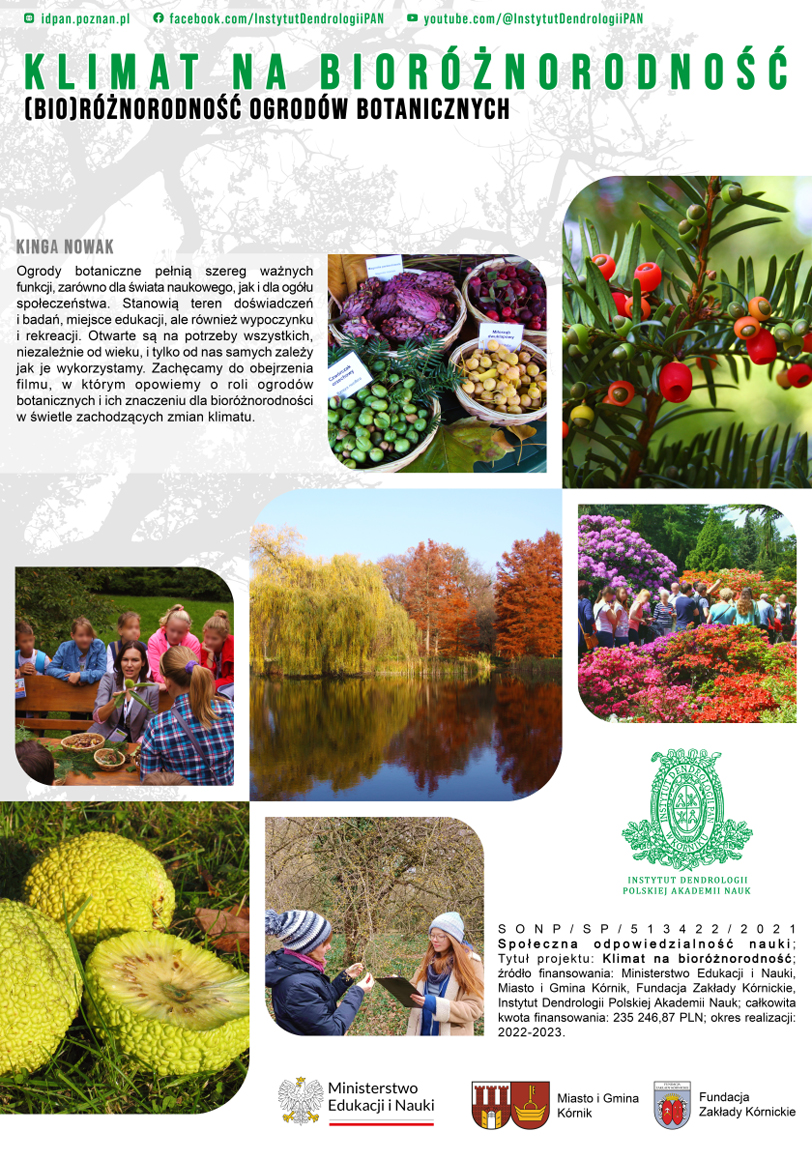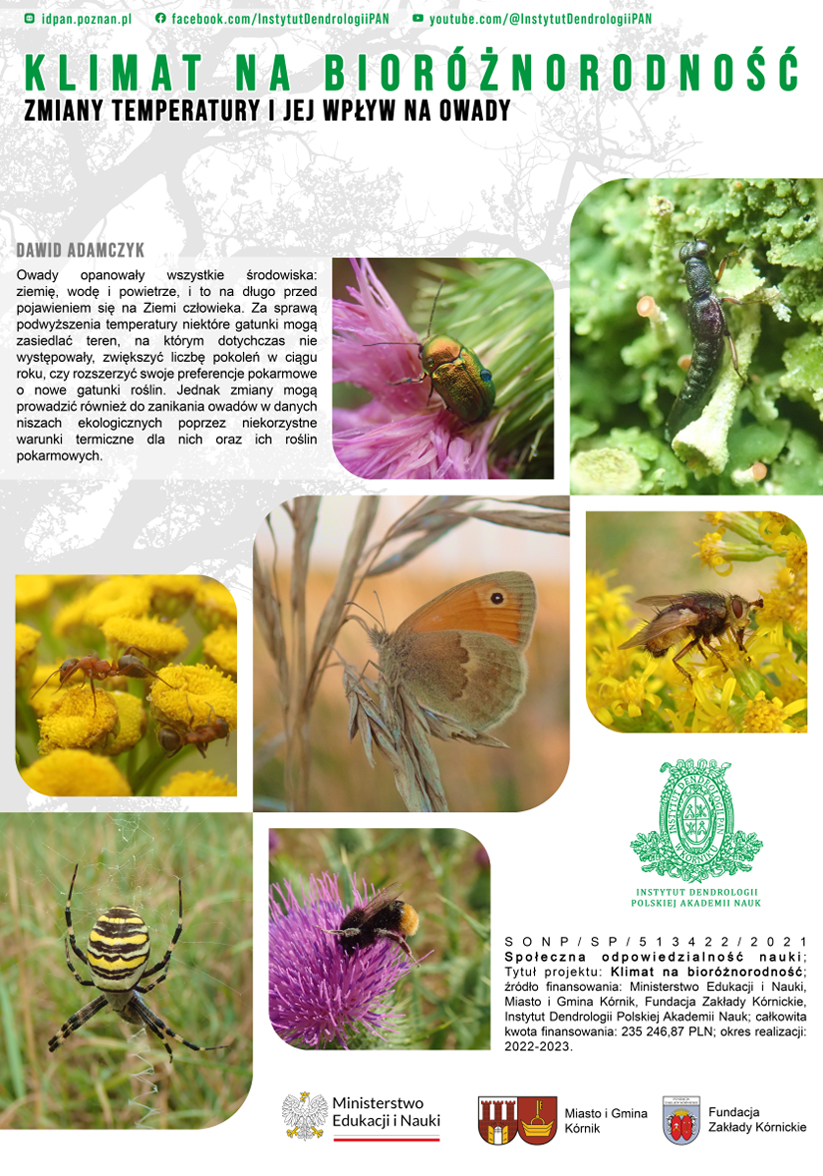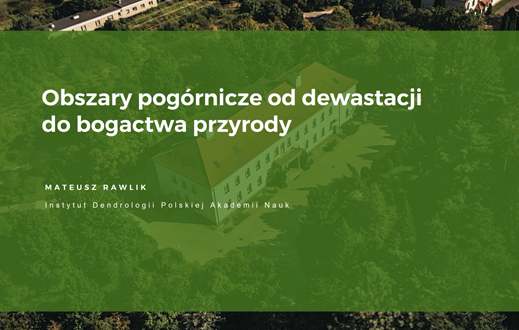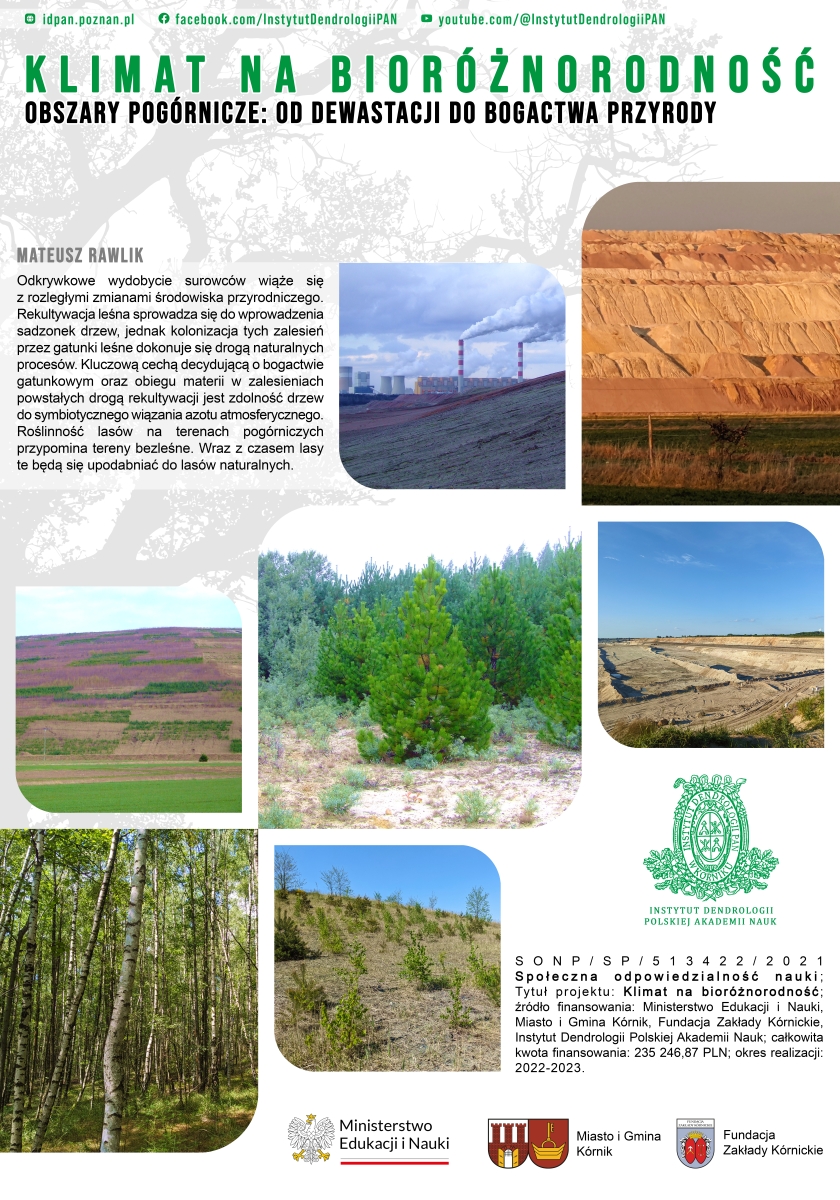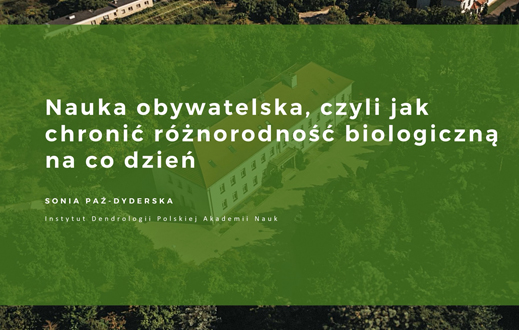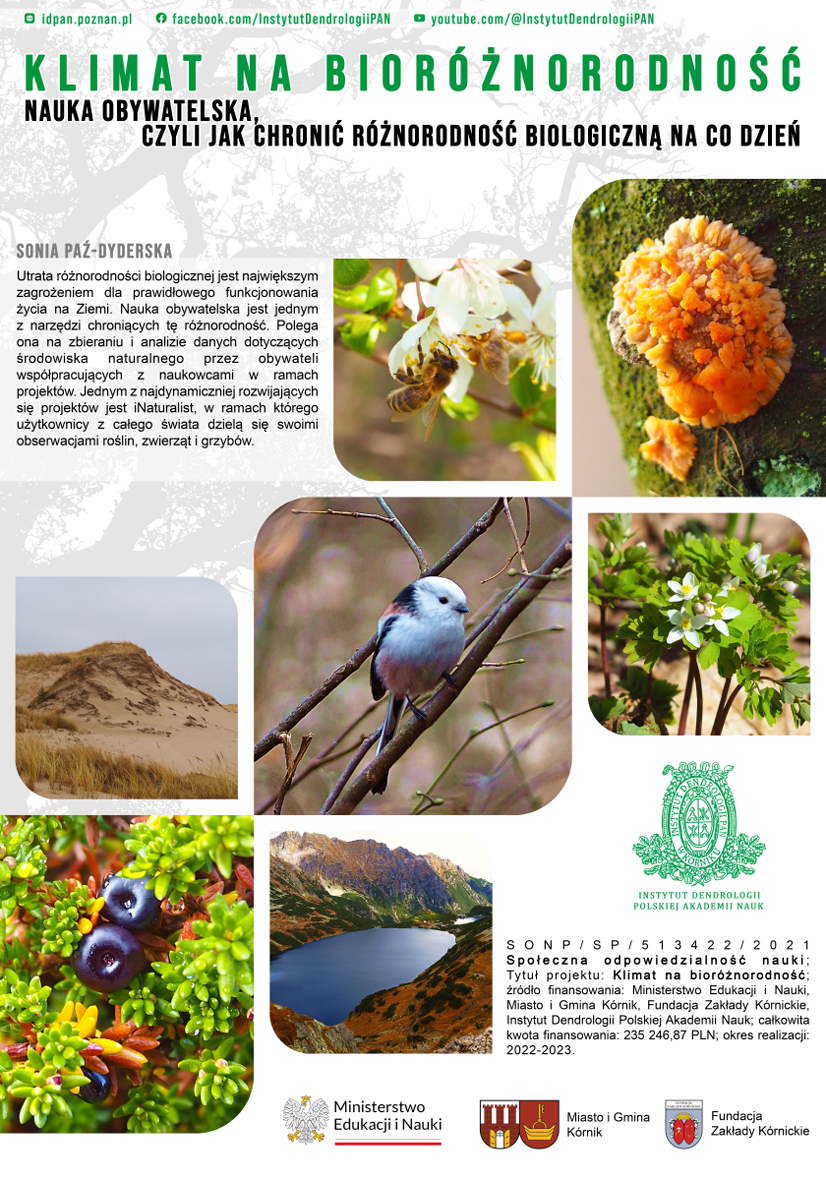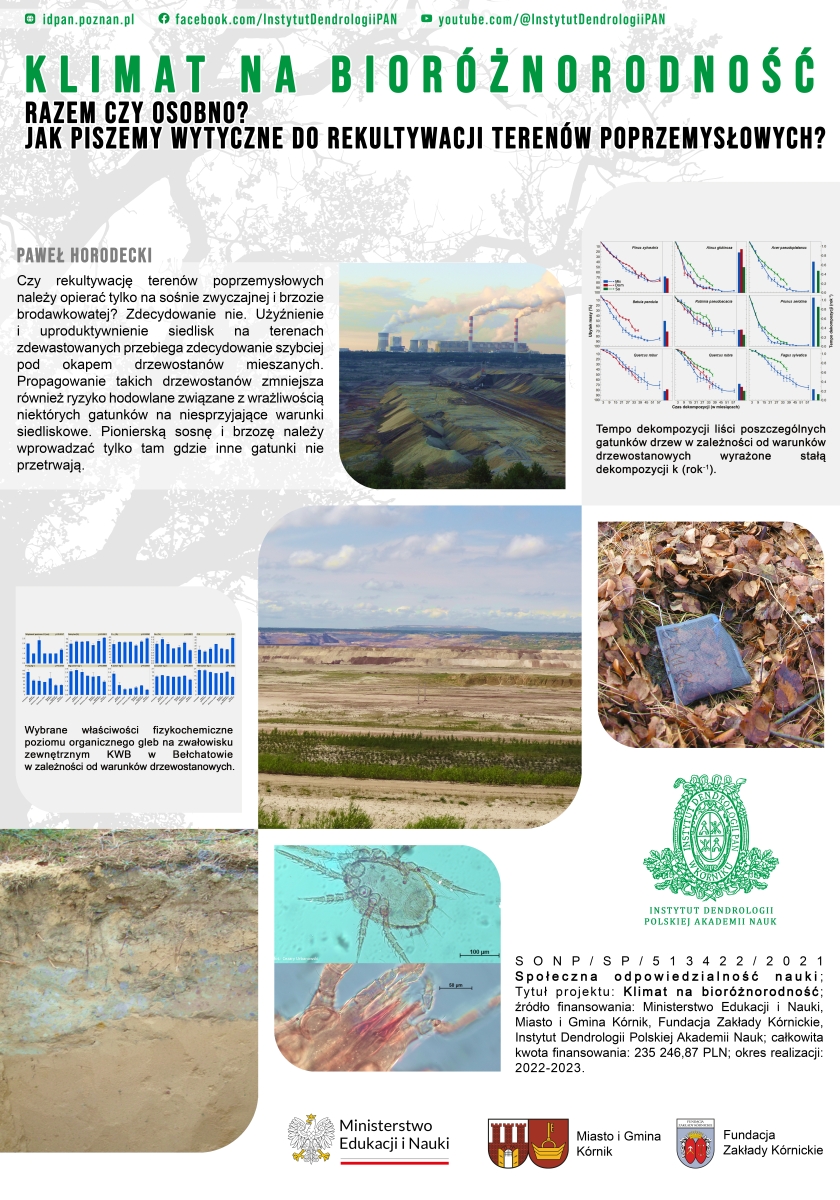We invite you to listen to Dr. Kinga Nowak’s lecture entitled “(Bio)Diversity of botanical gardens.”
Botanical gardens perform a number of important functions, both for the scientific world and for the society at large. They provide a site for experimentation and research, a place for education, but also for rest and recreation. They are open to the needs of all, regardless of age, and it is up to us alone how we use them. We encourage you to watch the video, in which we will talk about the role of botanical gardens and their importance for biodiversity in light of ongoing climate change.
We invite you to listen to Mr. Dawid Adamczyk’s, M.Sc., lecture entitled “Temperature changes and their impact on insects.”
Insects have mastered all environments: land, water and air, long before the appearance of man on Earth. With the increase in temperature, some species can populate an area where they did not previously exist, increase the number of generations per year, or expand their feeding preferences with new plant species. However, changes can also lead to the disappearance of insects in given ecological niches through unfavorable thermal conditions for them and their food plants.
We invite you to listen to Dr. Mateusz Rawlik’s lecture entitled “Post-mining sites: from devastation to natural wealth”.
Open-pit mining of raw materials is associated with extensive changes to the natural environment. Forest reclamation is reduced to the introduction of tree seedlings, but the colonization of these afforestations by forest species is carried out through natural processes. The key feature that determines species richness and the circulation of matter in afforestations created by reclamation is the ability of trees to symbiotically bind atmospheric nitrogen. The vegetation of forests in post-mining areas resembles forestless areas. As time passes, these forests will become more similar to natural forests.
We invite you to listen to Ms. Sonia Paź-Dyderska’s, M.Sc., lecture entitled “Citizen science, or how to protect biodiversity on a daily basis.”
Loss of biodiversity is the greatest threat to the proper functioning of life on Earth. Citizen science is a valuable tool for protecting this diversity, involving the collection and analysis of environmental data by citizens who collaborate with scientists on various projects. One of the fastest-growing projects is iNaturalist, where users from around the world share their observations of plants, animals, and fungi.
We invite you to listen to Dr. Paweł Horodecki’s lecture entitled “Together or separately? How do we write guidelines for industrial site reclamation?”
Should post-industrial sites reclamation be based only on the Scots pine and the silver birch? Definitely not. The fertilization and productivity of habitats on devastated sites proceed much faster under the canopy of mixed stands. Promoting such stands also reduces the cultivation risks associated with the sensitivity of certain species to unfavorable habitat conditions. Pioneer pine and birch should be introduced only there, where other species will not survive.











